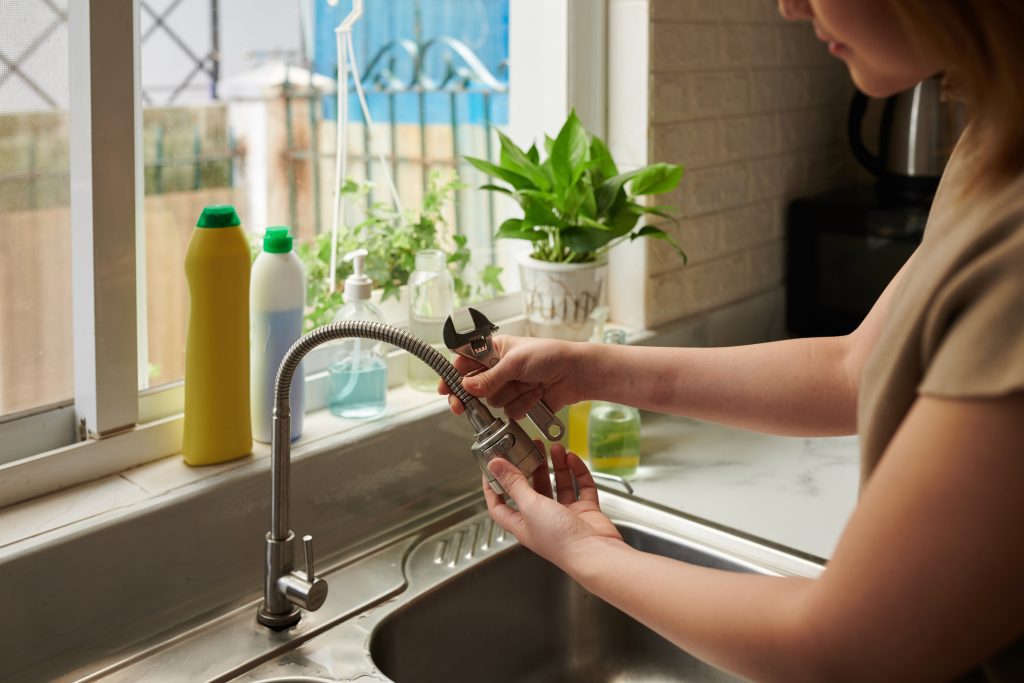How to Change Your Own Sink Faucet: A Step-By-Step Guide

Installing Your Own Faucet: Follow These Steps
Changing a sink faucet is a rewarding DIY project that can enhance the functionality and appearance of your kitchen or bathroom. While this task doesn't require a licensed plumber, there are times when professional help might be necessary due to unforeseen difficulties. This comprehensive guide will walk you through the steps to change your own sink faucet, from gathering the necessary tools to completing the installation.
Tools and Materials You Will Need
Before you start, make sure you have the following tools and materials:
- Adjustable wrench
- Basin wrench
- Phillips and flat-head screwdrivers
- Plumber's tape (Teflon tape)
- Bucket or container
- New faucet kit (including gaskets, washers, and mounting hardware)
- Silicone sealant (optional)
- Cleaning supplies (sponge, rags, cleaning solution)
Step 1: Prepare Your Workspace
- Clear the Area: Remove any items stored under the sink to provide easy access to the plumbing.
- Turn Off the Water Supply: Locate the shutoff valves under the sink and turn them clockwise to close them. If there are no shutoff valves, turn off the main water supply to your home.
- Relieve Pressure: Turn on the faucet to release any remaining water in the lines.
Step 2: Remove the Old Faucet
- Disconnect Water Lines: Place a bucket or container under the sink to catch any water that drips. Use an adjustable wrench to disconnect the water supply lines from the faucet.
- Remove Mounting Nuts: Using a basin wrench, loosen and remove the mounting nuts securing the faucet to the sink. If the nuts are stuck, apply penetrating oil to loosen them.
- Detach the Faucet: Once the mounting nuts are removed, lift the old faucet out of the sink. Clean the area around the faucet holes to remove any old sealant or debris.
Step 3: Install the New Faucet
- Assemble the Faucet: Follow the manufacturer's instructions to assemble the new faucet. This typically involves attaching the spout and handles to the base.
- Apply Plumber's Tape: Wrap plumber's tape around the threads of the faucet’s connections to ensure a tight seal and prevent leaks.
- Position the Faucet: Place the faucet into the mounting holes on the sink. Ensure it is properly aligned and sits flush against the sink surface.
- Secure the Faucet: From underneath the sink, install the mounting hardware provided with the faucet kit. Use a basin wrench to tighten the mounting nuts securely. Be careful not to overtighten, as this can damage the sink or faucet.
Step 4: Connect the Water Supply Lines
- Attach Water Lines: Connect the water supply lines to the corresponding hot and cold water inlets on the faucet. Use an adjustable wrench to tighten the connections securely.
- Check for Leaks: Before turning on the water supply, double-check all connections to ensure they are tight. Turn on the shutoff valves slowly and check for leaks around the connections.
Step 5: Test the Faucet
- Turn On the Faucet: Turn on the water supply and test the faucet by running both hot and cold water. Check for proper water flow and any leaks around the base or connections.
- Seal the Base (Optional): If desired, apply a thin bead of silicone sealant around the base of the faucet to create a watertight seal. Wipe away any excess sealant with a damp cloth.
Troubleshooting and When to Call a Plumber
While changing a sink faucet is generally a straightforward task, you may encounter some challenges:
- Stuck or Rusted Nuts: If the mounting nuts are rusted or difficult to remove, you might need to use penetrating oil or a hacksaw to cut them off.
- Leaks: If you notice leaks after installation, recheck all connections and ensure they are tight. If leaks persist, you may need to replace faulty washers or seals.
- Water Pressure Issues: If the water pressure is low, check for debris in the aerator or supply lines. Clean or replace the aerator if necessary.
If you encounter significant difficulties or are unsure about any part of the installation process, it may be best to call a licensed plumber. Professional plumbers have the expertise and tools to handle complex issues and ensure your faucet is installed correctly.
Maintenance Tips for Your New Faucet
To keep your new faucet in good working condition and avoid problems like low water pressure, follow these maintenance tips:
- Regular Cleaning: Clean the faucet regularly with mild soap and water to prevent buildup of mineral deposits and grime. Avoid using abrasive cleaners that can damage the finish.
- Check for Leaks: Periodically inspect the faucet and connections for any signs of leaks. Address any issues promptly to prevent water damage.
- Maintain Aerator: Remove and clean the aerator every few months to maintain optimal water flow. Soak it in vinegar to dissolve mineral deposits.
You Can Definitely Do It Yourself, But We Can Help
Changing your own sink faucet can be a fulfilling DIY project that enhances the look and functionality of your kitchen or bathroom. By following this step-by-step guide, you can successfully replace your old faucet with a new one. While a licensed plumber is not required for this task, don’t hesitate to seek professional help if you encounter difficulties or are unsure about any part of the installation process. With the right tools, materials, and a bit of patience, you can enjoy a new, functional faucet in no time. Happy plumbing!
Need Help Installing a Sink Faucet
If doing it yourself has turned into a disaster, or you don't even want to try it, give us a call. Our team of experts is standing by to help select and install the best sink faucets for your needs.